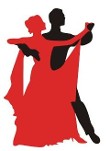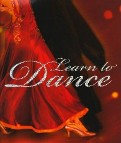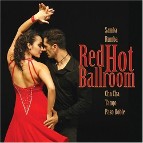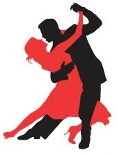|
|
Leadership Inspiration from the Dance Floor
Fred and I love to dance the slow fox. As the music begins to play, we adjust our posture to find our starting position and a comfortable stance. Concentrating on the beat, we focus our minds on the dance and each other and let our feet find the rhythm. Fred sets the pace, guiding me with a gentle but firm hand and, intuitively sensing his direction, I mirror his moves. As we dance, we pay attention to each other’s body language, subtly re-aligning our posture to allow each other space. All around us, we subconsciously observe the other dancing couples, even though we are in a world of our own...
Leadership can be found in every activity and every situation in life; and dancing provides a great setting in which to discover metaphors for the business world, since all leadership principles are as true on the dance floor as they are in the boardroom. It is in the dance world that we find an aesthetic and graceful way of leading and being led within a clearly defined framework of music and choreography. Dancing is a source of energy, inspiration and balance, requiring a great amount of sensitivity, and each dance calls for a different approach, mindset and intensity. And so, it is on the dance floor that I have uncovered my attitude towards fundamental questions in life and learned some of the most important lessons in leadership.
Here’s what Leaders can learn from Dancers:
- Self-Leadership: If you are confident with the choreography, it will show and inspire others to follow. To be able to lead others, you must begin with yourself. My dance partner, Fred, needs to know the choreography before he can effectively lead me. If he is not at ease with the steps, both of us will struggle and it will show. A leader needs to exhibit confidence, clear intentions and trust. Believing in yourself as a leader is the first step to becoming your true, authentic self. If a leader sets an intent that is contrary to his actions, he creates mindlessness. On the dance floor, this leads to a loss of beauty and elegance, little crashes or abrupt stops – wasting momentum and energy. If a leader’s intent is in alignment with his actions, he will create mindfulness and flow.
- Consciousness: Knowing who you are. Leadership means being aware of your own style. It is about figuring out who you are, what you're passionate about, and then expressing exactly that. To the outside world, Fred appears calm and elegant showing strength and balance, but inside there is a lot of thought and hard work going on. His style and rhythm are poised, capable and unflappable. He leads by encouraging, engaging, inquiring and empathizing with me. He is focused on the process, knowing instinctively which possibilities exist, when to improvise and where humor can save a situation when all else fails!
- Connectedness: Working in partnership to create the best results. Leading is about connecting, creating resonance and working in partnership. Fred is a great leader on the dance floor because he knows exactly where I am at every moment. He senses which foot my weight is balanced on without looking; and he knows my strengths and weaknesses. When we dance, there is consent, connectedness and a shared passion for our goals. The way he holds himself leads me to effortlessly do my part and follow him well.
- Strength: Recognizing others’ abilities and allowing them to shine. Leadership means letting other people’s strengths shine, and giving them the opportunity to excel at their own personal mastery. People entrust themselves to a leader, in business as on the dance floor. None of Gene Kelly’s dance partners had his level of expertise; but he always made the women he danced with appear more proficient than they were. He put them at the center of the dance when they were performing the moves they did best.
- Alignment: Having a plan means knowing the choreography of your dance and sharing it with others. Being a good leader means you have a vision and a plan, so your partners know what their next steps should be. It means communicating those next steps with precision and in time for them to respond. And giving others the space they need to do their best.
- Development: Taking feedback on board and re-aligning where necessary. Great leaders continuously learn and grow from other’s responses, reactions and feedback. Leaders fine-tune their instructions so the responses produce the results they are looking for.
- Excellence: Be the best you can be and dance like nobody’s watching. Leaders consciously chose their attitude and this can be a deciding factor between failure and success. In competition ballroom dancing, judges want to see full expression and commitment to the movement. No holding back. Use the same procedure in business: Make the leap of faith, take the risk, and execute your decisions whole-heartedly. Dance full out.
- Action: Don’t be afraid of making mistakes, just start moving, the rest will take care of itself. Leaders focus on implementation. Both dancing and doing business can only be learned by taking action. Practicing, improvising with creativity and spontaneity and focusing on the execution will make the revenues. Go for it.
Food for thought and inspiration
- Self-Leadership: How can you hold yourself today, so that others effortlessly follow you?
- Consciousness: What are your afraid of? What gives you energy? What are you recognized for?
- Connectedness: How does it feel different when the interaction shifts to partnership?
- Strengths: How do you put others in the limelight? How do you provide others the space and time to grow and thrive?
- Alignment: What is your vision of leadership and what does your plan to execute it look like?
- Development: When and where have you learned through trial and error, experimenting, mutuality or vulnerability?
- Excellence: When did you last play full out?
- Action: What does it take for you to execute a plan? How does it make you feel?
Whenever you encounter or exhibit leadership, enjoy the process and the people, while you keep sight of the desired outcome. Dancing taught Fred and me the importance of non-verbal communication; we understand each other almost intuitively. We are in this together - either both of us look good dancing or no-one does. A positive attitude can create a dazzling performance in business and on the dance floor. And application, concentration and focus ensure the desired outcome in both worlds.
Conversely, you cannot perform any dance well if you are in conflict. Conflict resolution is the highest priority before entering the dance floor so that both partners feel relaxed with each other and have the capacity to focus on the action again. Both dancing and doing business are about relationship management, i.e. peoples’ attitude towards each other and their approach to getting things done. If Fred imposed steps, figures or expressions that I didn’t buy into, he would eventually risk the quality of our execution and take the fun out of our interactions.
On the dance floor, you can experience leadership in its purest form. It doesn’t matter what your background is, how much money you earn or where you find yourself in the hierarchy. All that counts is that you can make the dance work and enjoy it!
Or to quote one of the world’s most talented and admired dancers, Fred Astaire: “Do it big, do it right, and do it with style.”
|
|











